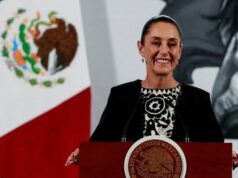Subsidising Delhi Metro fare may be a better option
Delhi chief minister Arvind Kejriwal has proposed to make Delhi Metro and bus travel free for women. An analysis of metro fares in comparison with other modes of transport suggests that reducing metro fares for everyone may yield greater dividends by making it an economically attractive option for at least 60% of the people who use personal vehicles for transport.
For many distances, the metro is actually more expensive than other modes of transport. Assuming that the cost of transport is an important factor in a person’s choice of commute, this could be a major reason why so many Delhiites continue to use their own vehicles.
Of course, Delhi Metro has many non-cost advantages like air-conditioned travel and no driving hassle (see graphic), but cost remains the overriding concern for most commuters — especially the poor.
The analysis by News Agency was done by comparing metro fares for each station between Karkardooma and Dwarka Sector 21 with other modes of transport. The distance between stations is the average of the minimum and maximum distance between the stations as estimated by Google maps.
The total cost of commuting by metro is calculated by adding Rs 40 (Rs 20 each for arriving at the metro and going to the final destination) as ‘last mile expenses’ to the normal metro fare. This cost is doubled to cover the round trip from home to work and vice versa.
For a like-to-like comparison, we also added all costs incurred by private vehicle owners. For a two-wheeler rider, it works out that for all commute distances, his or her own conveyance is far cheaper than travelling by metro. Assuming a running life of 10 years, if the total cost of a Rs 60,000 motorcycle is spread over 3,650 days, it works out to Rs 16.4 per day.
Similarly if one assumes that an average motorcycle runs for one lakh kilometres, the daily expense on maintenance would be around Rs 10.9. The daily expense on insurance and wear & tear works out at Rs 5.5 and Rs 4.1, respectively. Add another Rs 5 a day for cleaning and Rs 10 for parking.
Now, if a person living in Karkardooma goes to Preet Vihar for work, a round trip in the metro would cost him Rs 100 while the motorcycle would cost him Rs 56.3 (Rs 4.3 fuel cost and Rs 52 combined total of all other expenses). For all the 37 stations from Karkardooma to Dwarka Sec 21, the metro would be the more expensive option for such a person.
According to Delhi’s Economic Survey for 2018-19, there are 1.1 crore registered vehicles in the city of which 64.4% are two-wheelers. It follows that the metro is not an economically viable transport option for at least this 60% of the city’s commuters who use personal vehicles.
There are, of course, many who can’t afford to buy even a motorcycle. If public transport is more expensive than the overall operating cost of a motorcycle, it is clearly exorbitantly priced for the city’s poorest population.
Similar comparisons of the cost of travel by metro with other modes of transport confirm that metro fares are on the steeper side. If two people are travelling together, autorickshaws are a cheaper mode of transport till a distance of 11 km. For three people, the auto is cheaper for about 20 km.
In some cases, travelling by metro is as expensive as travelling by cab. Between 3pm and 4pm on Wednesday (June 5), pool-ride (in which two people are allowed) offered by a taxi aggregator was roughly as costly as the expense of two people travelling by the metro for up to 10 km. Considering the convenience factor, the cab appears to be a better option for this distance. For three people, a cab would be cheaper than metro for 11 km.
When compared with petrol and CNG cars (entry level), the metro is still a cheaper mode of transport if two people are travelling together. However, if more than three people travel together, even petrol and CNG cars are cheaper. In case of diesel cars, the capital and maintenance cost is much higher and hence it only becomes cheaper than metro when four people are travelling together.




